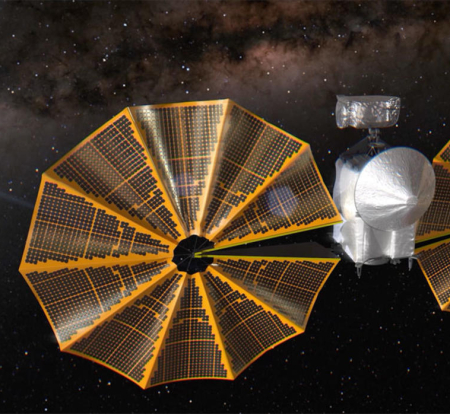Orbex begins construction of launch platform
Capitalism in space: Orbex announced today that it has awarded a contract to a Scottish company to begin the construction of the launch platform it will use with its smallsat Prime rocket.
Orbex has commissioned Motive Offshore Group, a leading Scottish company specialising in the design and manufacture of marine and lifting equipment, to fabricate and install the Launch Platform at a dedicated test site near Kinloss, close to the Orbex headquarters in Forres, Scotland.
The Launch Platform, known as Orbex LP1, is expected to be fully operational by early 2022. … The new Launch Platform will support the testing of Orbex´s Prime rocket, a micro-launcher designed to transport small satellites weighing around 150kg to low Earth orbit. Although actual launches of the Orbex Prime rocket will not take place at the Kinloss site, the Launch Platform will be fully capable of launching an orbital rocket, allowing for full ‘dress rehearsals’ of launch procedures.
This platform is likely similar to the very transportable launch platform used by Astra. The present plan is to do launches from Orbex’s launch facilities at the Sutherland spaceport in Scotland, presently under construction and the first such launch facility being built in the United Kingdom in more than a half century. If designed to be portable, however, Orbex will also be able to ship the Prime rocket to other launch locations, depending on the orbital requirements of each launch.
Capitalism in space: Orbex announced today that it has awarded a contract to a Scottish company to begin the construction of the launch platform it will use with its smallsat Prime rocket.
Orbex has commissioned Motive Offshore Group, a leading Scottish company specialising in the design and manufacture of marine and lifting equipment, to fabricate and install the Launch Platform at a dedicated test site near Kinloss, close to the Orbex headquarters in Forres, Scotland.
The Launch Platform, known as Orbex LP1, is expected to be fully operational by early 2022. … The new Launch Platform will support the testing of Orbex´s Prime rocket, a micro-launcher designed to transport small satellites weighing around 150kg to low Earth orbit. Although actual launches of the Orbex Prime rocket will not take place at the Kinloss site, the Launch Platform will be fully capable of launching an orbital rocket, allowing for full ‘dress rehearsals’ of launch procedures.
This platform is likely similar to the very transportable launch platform used by Astra. The present plan is to do launches from Orbex’s launch facilities at the Sutherland spaceport in Scotland, presently under construction and the first such launch facility being built in the United Kingdom in more than a half century. If designed to be portable, however, Orbex will also be able to ship the Prime rocket to other launch locations, depending on the orbital requirements of each launch.










